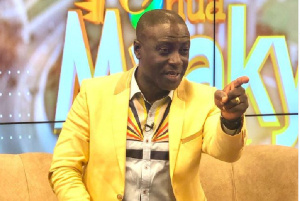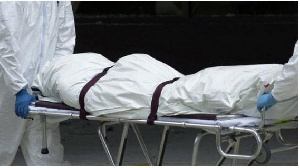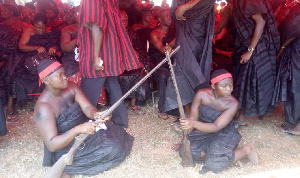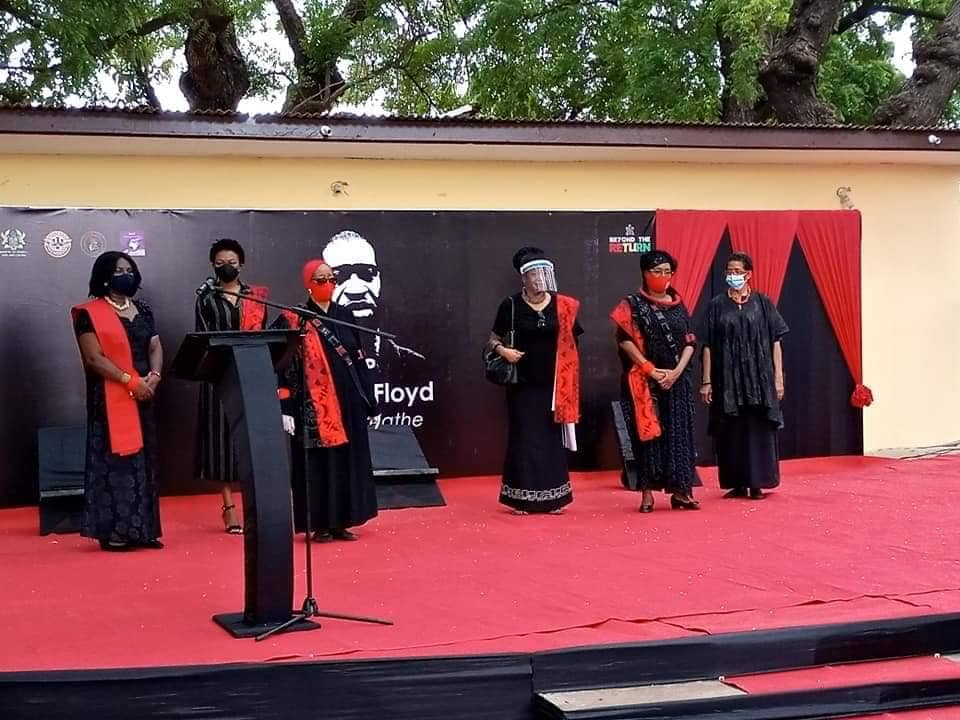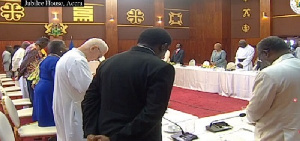Smiling Faces and Handshakes: How Nkrumah’s close allies bid him goodbye while plotting his ousting
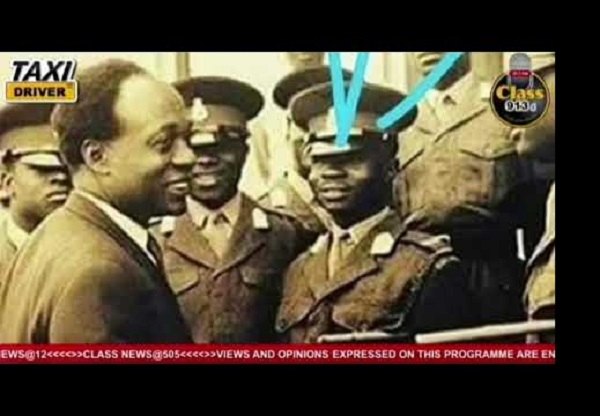
Of all Ghana’s four major military coups, the one that took out the country’s founder and first president, Osagyefo Dr. Kwame Nkrumah, was perhaps, the most unexpected.
And, in the words of Nkrumah captured in ‘Dark Days in Ghana,’ originally published by Zed Books in 1968, he detailed the final moments with some of the people closest to him. After the coup had taken place, he reflected and realized he never imagined they could be the ones to cause his political downfall.
The 1966 coup, famous for being the first military coup in independent Ghana, brought an end to the political life of Kwame Nkrumah, while he was away in Vietnam on an international assignment.
Led by Colonel Emmanuel Kwasi Kotoka and Major Akwasi Amankwa Afrifa, Nkrumah’s shock was clearly captured in the following excerpts in that book.
As you will read in the following extract, Kwame Nkrumah mentioned the names of some of these close men, who he said unknown to him were seeing him off at the airport for his last official trip as Ghana’s president, but had already been harbouring treasonable plans.
You will also get to read how Kotoka bought into the minds of the soldiers who helped him in his mutiny, with the claim that some Russian soldiers were being sneaked into the country through a secret tunnel connecting the airport and the Flagstaff House, the seat of government.
Read the full extract below:
“I left Accra on 21st February 1966. I was seen off at the airport by most of the leading government and Party officials, and by service chiefs.
I recall the handshakes and the expressions of good wishes from Harlley, Deku, Yakubu, and others.
These men, smiling and ingratiating, had all the time treason and treachery in their minds.
They had even planned my assassination on that day, though they later abandoned the idea.
I remember shaking hands with Major-General Barwah—to be murdered in cold blood three days later when he refused to surrender to the rebel army soldiers.
I little thought then that I would never see him again, or that Zanerigu, Commander of the Presidential Guard Regiment, Kojo Botsio, Kofi Baako and other ministers who were there at the airport, would be shortly seized by renegade soldiers and policemen and thrown into prison.
After a week of so-called “manoeuvres,” the operation began early in the morning of Wednesday, 23rd February 1966 when the garrison at Kumasi, numbering 600 men, was ordered to move southwards to Accra.
On the way, the convoy of some 35 vehicles was met and halted by the two arch-traitors Colonel Emmanuel Kwesi Kotoka, Commander of the Second Infantry Brigade Group, and Major Akwasi Amankwa Afrifa of the Second Brigade.
Kotoka had only recently been put in charge of the Kumasi garrison, and I had not yet confirmed his appointment.
Kotoka, Commander of the Second Infantry Brigade Group, and Major Akwasi Amankwa Afrifa of the Second Brigade.
Afrifa was left in command while Kotoka went to Accra to report progress to Commissioner of Police, John Willie Kofi Harlley and to find some soldier better known than himself to be the nominal head of the revolt.
The man chosen was Major-General Ankrah even though the conspirators had thought so little of his abilities than they had not previously troubled to consult him?
He was, however, one of the few officers who had held even the rank of major in colonial days and had seen service in the world war if only as a quartermaster.
In the Congo he had shown some bravery and, at least, routine ability and I had decorated him for his services but essentially, he was of mediocre calibre.
He held the post of second in command in the armed forces after independence through seniority, not ability.
He would not have been appointed even to this post but for the death shortly before of another senior officer.
In 1965, I retired him. Undoubtedly, it was his lack of understanding of what was going on around him which recommended him as a figure-head to those manipulating the ‘coup’.
The troops were then told that I intended sending them to fight in Vietnam and in Rhodesia, and that I had deserted Ghana taking with me £8 million.
There was, they were told, no government left in Ghana, and it was their duty to assume control of the country to maintain law and order.
Already, it was said, Russian planes were landing on a secret airs rip in northern Ghana.
Furthermore, a secret tunnel had been made from Flagstaff House, the presidential residence, to Accra airport, and for days Russians had been arriving.
The only way to save Ghana, and to avoid being sent to fight in Vietnam, the troops were told, was to take Flagstaff House.
Several days after the military seizure of power, Kotoka and Afrifa appeared on Ghana TV congratulating themselves on their easy success.
One remark stood out unmistakable and clear: “And you know, we didn’t find any Russians at all— not one! Nor could we find any trace of that tunnel.” This was followed by peals of laughter at the poor soldiers who had believed their story.
The first object of the military operation was to force the surrender of Major-General Barwah, Army Chief of Staff and Deputy Chief of Defence Staff, who was in command of the Ghana Army in the absence from the country of the Chief of Defence Staff. General Aferi.
At the same time, Brigadier Hasan, Head of Military Intelligence, and Colonel Zanerigu. Commander of the Presidential Guard Regiment, and Owusu-Sekyere, former head of the C.I.D. and in charge of the Special Branch, were to be arrested.
This stage of the operation was badly bungled. Hasan was arrested, but Zanerigu, when confronted, escaped through a window of his house and drove to Flagstaff House to warn the Presidential Guard Regiment.
Barwah could not be intimidated. Woken from his sleep in the early hours of the morning of the 24th by the arrival of Kotoka and some 25 men, he courageously refused either to join the traitors or to surrender.
Thereupon, Kotoka shot him dead at point-black range in cold blood in the presence of his wife and children.
The seven security officers who were stationed at Barwah’s house were also murdered on the spot on Kotoka’s orders.
Kotoka subsequently boasted of his killing of Barwah but said because he was protected by a “juju” he was able to catch the bullets which Barwah fired in his defence and to throw them back at him.
When the counter coup of April 1967 took place Kotoka’s “magic” could not save him.
Unlike Barwah, he surrendered without protest or struggle to those who had captured him at his headquarters.
His “juju” did not prevent him being shot in his turn. Barwah’s murder was one of the most disgraceful and ghastly crimes ever committed in Ghana’s history.
In an attempt to wipe the blood from their hands the so-called N.L.C.‘ gave Barwah and the security officers a military burial a few days later.
What a mockery, and what hypocrisy! Yet these terrible, cold-blooded murders were only the first of many which occurred on 24th February and during subsequent days.
They set the tone, as it were, of the whole operation which was characterised throughout by cowardice, bloodshed and criminal stupidity.
By 6 a.m. on the 24th, the Accra police, acting on Harlley’s orders, had rounded up most of the ministers and other key political figures, and fighting had broken out at Flagstaff House between members of the Presidential Guard Regiment and rebel army units.
There were about thirty members of the Guard Regiment at Flagstaff House when the alarm was raised.
These were soon joined by others who managed to slip in by a back entrance to reinforce their comrades.
Although heavily outnumbered they successfully held up the rebel detachment sent to seize the Ghana radio station a short distance from Flagstaff House.
Only eight of the 124 detailed for this operation managed to get through.
These captured the radio station, apparently without incident, and at 6 a.m. Kotoka arrived to broadcast that the army and police had taken over the government of Ghana.
The announcement was premature. At 7 a.m. resistance was actually increasing at Flagstaff House, as the defenders, less than a hundred of them, fought fiercely back against some 600 rebel troops.
By this time a battalion in Accra under Ocran had joined them, not knowing what the fighting was all about.
Thus the rebels were able to gain control of the airport, cable office, radio station, and all the approach roads to Accra.
Kotoka had established a combined H.Q. with the police at Police Headquarters, and from there the order was given for the 2nd Battalion to go into action at Flagstaff House.
The Guard Regiment fought on, though their position was now-hopeless.
The outside walls of Flagstaff House had been open, and the defenders had retreated behind the second gate. Still they refused to surrender.
It was only after the rebels threatened to blow up the family residence at Flagstaff House in which my wife and three young children were sheltering that they finally gave in.
The fierce fighting at Flagstaff House at this time was in striking contrast to the failure at the time of the April 1967 counter-coup of Kotoka’s bodyguard to defend his headquarters.
He had made Flagstaff House into a strong point from which he commanded the army.
Yet when it was attacked by a small detachment of some 25 men the garrison immediately surrendered as did that of the Broadcasting Station which was also only attacked by a force of similar size.
Again a small group of soldiers, not more than 50 in all, were sufficient to capture the Castle at Osu from which the “N.L.C.” conducted their government.
Ankrah the Chairman’ of the “N.L.C.” was the first of its defenders to run away, jumping over the Castle wall, plunging into the sea and wading down the shore.”
Excerpt from “Dark Days in Ghana”, originally published by Zed Books in 1968.
Source: www.ghanaweb.com

